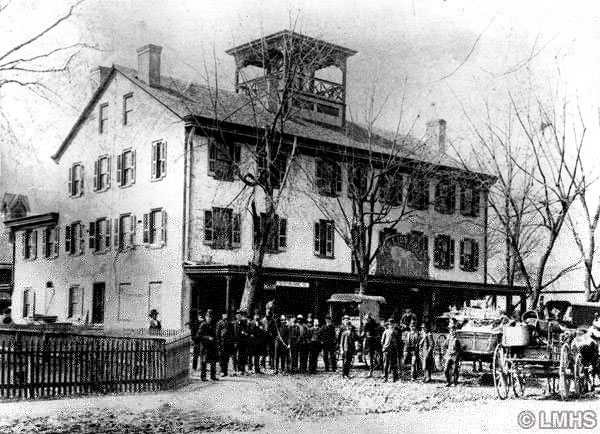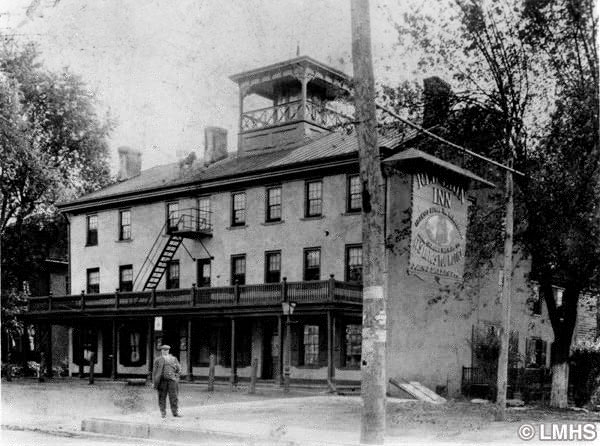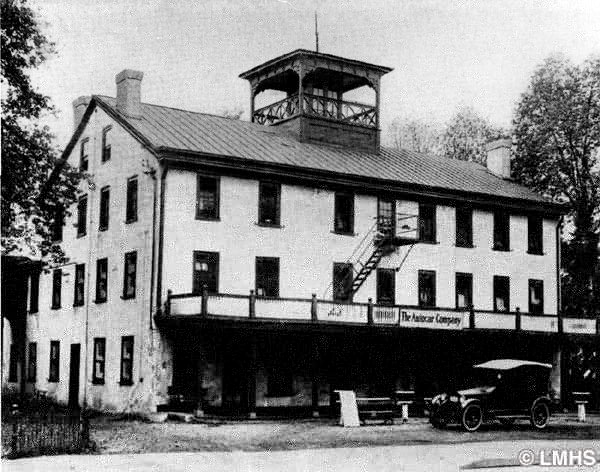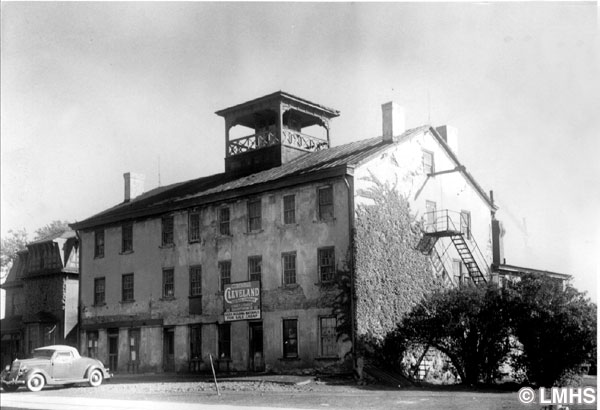Red Lion Inn
(The building stood very close to today’s Greenfield Avenue on Lancaster Avenue, facing Ardmore West shopping plaza.) After the American Revolution, the new Lancaster Turnpike was built straight through Lower Merion, eight miles from center Philadelphia.
The Green Tree
Malcome Guinn first began to dispense refreshment at the Sign of the Green Tree in what is now the middle of Ardmore, then Athensville. In 1808, Green Tree was sold to John Siter (Sider) who, we believe, changed the sign to depict a Red Lion. Historian William Buck, writing in 1859, claimed that the old building was torn down and the “present fine three story hotel…erected in 1855” and kept by Horatio (Rash) Litzenberg, who retained the name Red Lion.
The Litzenberg Era
This “stand” was more than a tavern with rooms to rent upstairs and 30 acres out in back for herds of cattle en route to Philadelphia stock pens. Its east wing housed ageneral store where village necessities were stocked and drovers swapped yarns around the stove; in a corner there was a bar, open til 10 o’clock, closed on Sundays. Three times a week a wagon pulled by two horses made a trip to the wharves on the Delaware River to replenish merchandise. Later, back in Athensville, willing hands unloaded goods in exchange for “many a sarsaparilla, etc., particularly the etc.” wrote Josiah S. Pearce who himself may have rolled a barrel of mackerel or two for Mr. Litzenberg.


This proprietor was, 1855-1875, the most important man in the village: businessman, farmer, banker, and mainstay of the Lower Merion Baptist Church…a man small in stature but filled with energy, integrity, willing and able to toss a man twice his weight into the turnpike if it seemed to him “a good, honest, Christian necessity.”
Failing health forced Horatio Litzenberg into retirement; others ran the store, and eventually a son-in-law was landlord of the entire enterprise after Horatio died in 1880.
The Pennsylvania Railroad advertised rates for summer guests at the Red Lion at $8 and $10 per week in 1884, when 700 people called Ardmore home.
Years rolled by and Prohibition and progress spelled the end for the Red Lion as an inn. By early 1900s, the Autocar Company, Lower Merion’s only heavy industry, all but surrounded the old inn and finally occupied it as office space. The building was demolished in 1941.


